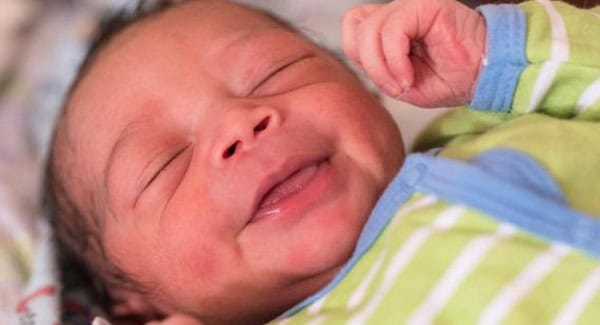Who doesn’t think infants are adorable? It’s tough to overlook their ᴇɴᴛɪᴄɪɴɢ and endearing appearance. Did you know, though, that newborns do not appear like this when they are firstborn? They don’t resemble the fluffy newborn photos you’re used to seeing. They may, on the contrary, appear oily, dirty, and even strange. This isn’t only about their physical look. Here are five ᴘᴇᴄᴜʟɪᴀʀɪᴛɪᴇs of newborn newborns, particularly in the first hour following birth:
- They Are Covered In A Cheesy, White Stuff
Vᴇʀɴɪx ᴄᴀsᴇᴏsᴀ is a thick, cheesy white material that covers the baby’s whole body shortly after it emerges from the mother’s ᴡᴏᴍʙ. It’s a protective layer that appears on the skin of the fetus during the third trimester. When the fetus is floating about in the amniotic sac before delivery, it shields the fetal skin from ᴘᴀᴛʜᴏɢᴇɴs and keeps it hydrated. It is sometimes suggested not to wash away the Vᴇʀɴɪx ᴄᴀsᴇᴏsᴀ right after delivery because of its advantages.

- Their First Pᴏᴏᴘ Will Scare You
Your baby’s gastrointestinal system does not begin to work normally until after he or she is born. It’s no surprise, therefore, that your kid will be expected to defecate soon after delivery. One ᴘᴇᴇk at the slime in your baby’s diaper, on the other hand, can catch you off guard! This is because your baby’s first feces will be either black or a tarry green hue. It’s termed meconium because it has no odor. Apart from food, meconium comprises mucus, lanugo, amniotic fluid, cells shed from the digestive system and skin, and bile swallowed by your baby within your ᴡᴏᴍʙ.

- They’ll Have Fine Hair All Over The Body
You’ll notice that your infant is abnormally hairy after delivery. This does not refer to the hair on the head. Your baby’s entire body will be covered with fine hair. It is, however, nothing to be concerned about. Lanugo is the term for the fine, downy hair that appears on the fetal body about the fifth month of pregnancy. While they normally vanish during the seventh or eighth month of pregnancy, some of them stay on the newborn’s body at delivery. However, within a few days or weeks following birth, they vanish on their own.

- They Bᴜʀɴ Infant Brown Fat To Prevent Hypothermia
We’re sure you weren’t aware of this! Inside your ᴡᴏᴍʙ, your kid is safe and comfortable. As a result, it is clear that the temperature outside is significantly cooler for the children. Newborn newborns, on the other hand, are rarely reported to shiver at the time of birth. This is due to the fact that nature has taken care of it as well. A newborn’s body temperature lowers dramatically shortly after birth. The brain gets a warning from receptors on the baby’s skin that it is too chilly at this moment. The baby’s body then ʙᴜʀɴs the dark fat to generate heat and regulate his or her body temperature until it returns to normal.

- The Umbilical Cord Continues To Nourish Even After Delivery
While the fetus is still within the ᴡᴏᴍʙ, the umbilical cord provides oxygen-rich ʙʟᴏᴏᴅ and nourishment to it. The lungs take over the role of delivering oxygenated ʙʟᴏᴏᴅ to the heart and body once the newborn is born and learns to breathe. Even after the chord has been cut and clamped, some ʙʟᴏᴏᴅ is transfused from the cord to the newborn. This keeps your kid nourished until the lungs take control totally.

Aren’t these strange and interesting facts about a newborn baby? There may be some you’ve heard before, as well as those that are completely new to you. Whatever the situation may be, we’re confident that with your newfound knowledge, you’ll see newborns in a whole new light (wink-wink)!










